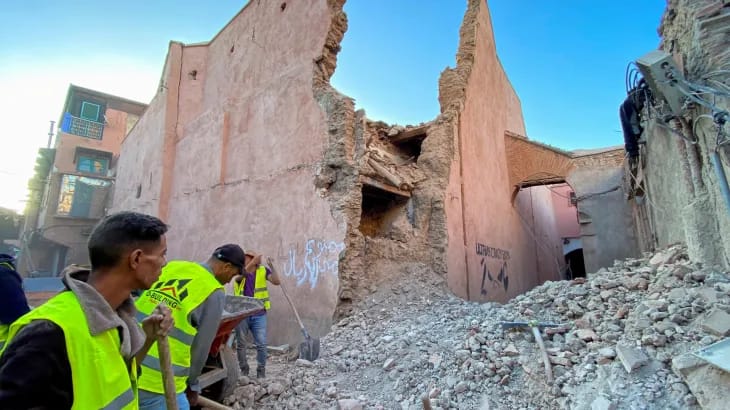In a nightmarish ordeal, Marrakesh, Morocco’s enchanting fourth-largest city, was shaken to its core by a catastrophic earthquake, leaving a trail of destruction in its wake. The picturesque UNESCO World Heritage site, known for its ancient charm and vibrant culture, now faces an uncertain future as concerns mount over the fate of its fragile historic structures. This report delves into the aftermath of the seismic disaster, exploring the damage to Marrakesh’s old town, iconic landmarks, and the looming question of hosting international meetings in the midst of this crisis.
UNESCO World Heritage Site Shattered
The heart-wrenching images emerging from Marrakesh tell a grim tale of a city in turmoil. The ancient city’s old town, affectionately referred to as the medina, has borne the brunt of the earthquake’s fury. The medina, recognized as a UNESCO World Heritage site since 1985, boasts buildings dating back to the city’s 11th-century foundation. Encircled by ancient Almoravid dynasty walls, the medina is a labyrinth of narrow alleyways and historic treasures.
The walls, painted in a distinct ochre hue derived from the city’s surrounding red earth, earned Marrakesh its moniker as the “Red City.” Amidst this historic backdrop lies the world-famous Jemaa el-Fna, the bustling square that has been the heart of African commerce and entertainment since the 14th century. While reports indicate that parts of the historic walls have suffered damage, the most precious heritage at Jemaa el-Fna appears to have remained largely intact.
Iconic Medina and Jemaa el-Fna Spared
The devastating earthquake, which sent shockwaves through Marrakesh, brought many residents rushing to Jemaa el-Fna as buildings crumbled and debris cluttered the streets. The triangular square, home to restaurants, market stalls, and public buildings, is a commercial and entertainment hub cherished by both locals and tourists alike.
The iconic minaret of the Kotoubia mosque, a meticulously maintained treasure, appeared unharmed. However, in another part of the square, the minaret of a lesser-known mosque lay in ruins, damaging nearby vehicles. As Marrakech resident Miloud Skrout stood before a pile of rubble in the old city, he expressed the difficulties faced in aiding trapped residents due to blocked alleyways.
Concerns Mount as IMF and World Bank Meetings Loom
The timing of this disaster adds another layer of complexity to the already dire situation. Marrakesh is scheduled to host the annual meetings of the International Monetary Fund (IMF) and World Bank in early October, a global event that was anticipated to showcase the city’s charm and potential. However, in the aftermath of this earthquake, concerns are mounting over the structural integrity of Marrakesh’s ancient structures.
One Marrakesh resident, Mohamed, vividly recalls the terrifying moment the earthquake struck. “It suddenly and violently started shaking,” he said, “Many old buildings were collapsed in the old city. The suburbs of Marrakesh were hugely affected by the earthquake.” As the city grapples with its fragile heritage, the question remains: Can Marrakesh host these prestigious international meetings amidst this seismic uncertainty?















